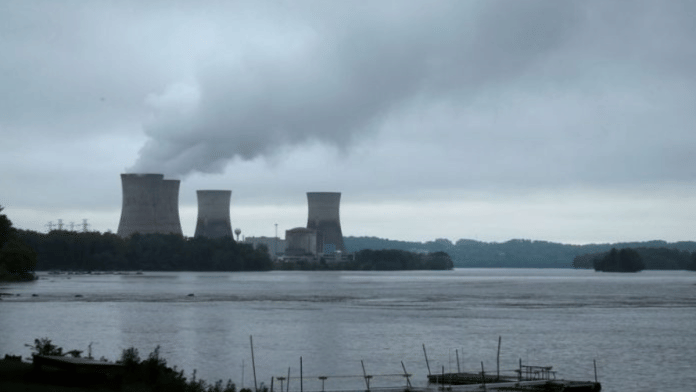Thank you dear subscribers, we are overwhelmed with your response.
Your Turn is a unique section from ThePrint featuring points of view from its subscribers. If you are a subscriber, have a point of view, please send it to us. If not, do subscribe here: https://theprint.in/subscribe/
Ignorance can indeed be bliss, particularly when it comes to the terrifying reality of nuclear proliferation. While the existence of nuclear weapons and the potential for nuclear disaster may seem distant and abstract, the consequences are real and severe. Despite the inherent dangers, many countries continue to amass nuclear arsenals under the pretext of deterrence, hoping to prevent conflict through the threat of mutual destruction. This article explores the multifaceted effects of nuclear proliferation, encompassing immediate devastation, long-term health impacts, environmental contamination, and geopolitical tensions.
Origins of Nuclear Technology
The journey of nuclear technology began in the early 20th century with the discovery of radioactivity and the advancement of nuclear physics. This culminated in the Manhattan Project (1942-1945), leading to the first atomic bombs’ detonation over Hiroshima and Nagasaki in August 1945, effectively ending World War II. This event marked the dawn of the nuclear age, demonstrating both the destructive power of nuclear weapons and their potential to alter the course of history.
Benefits of Nuclear Technology
Despite its destructive potential, nuclear technology also offers significant benefits:
- Low-Carbon Electricity: Nuclear power plants provide around 10% of the world’s electricity and nearly 30% of the world’s low-carbon electricity, contributing to efforts to combat climate change.
- Medical Applications: Nuclear technology is crucial in medical imaging techniques and radiation therapy for cancer treatment, saving countless lives.
- Food Irradiation: This technology helps extend the shelf life of food and reduce the risk of foodborne illnesses by eliminating bacteria and other pathogens.
- Industrial Uses: Non-destructive testing (NDT) using nuclear technology allows for the inspection of materials and structures without causing damage.
Immediate Effects of Nuclear Detonation
When a nuclear weapon detonates, it releases an immense amount of energy in the form of blast, heat, and radiation. The immediate effects are catastrophic:
- Blast Wave: The initial blast creates a fireball that rapidly expands, producing a shockwave that travels at supersonic speeds. This shockwave causes immense pressure, destroying buildings and infrastructure and resulting in significant casualties within a certain radius.
- Thermal Radiation: The intense heat from the fireball causes severe burns and ignites fires over a large area. Depending on the bomb’s size, this heat can cause third-degree burns miles away from the epicenter.
- Initial Radiation: Gamma rays and neutrons are released within the first minute of the explosion, causing acute radiation sickness and death to those close to the blast site.
Short-Term and Long-Term Effects
The fallout from a nuclear explosion includes both immediate and long-term consequences:
- Electromagnetic Pulse (EMP): A nuclear detonation, especially at high altitudes, can generate a strong EMP that disrupts or destroys electronic equipment and electrical grids over a wide area.
- Radioactive Fallout: The explosion sends radioactive particles into the atmosphere, which then fall back to Earth, contaminating land, water, and air. Fallout can spread over thousands of square miles, depending on wind patterns and weather conditions.
- Acute Radiation Syndrome (ARS): High doses of radiation exposure cause ARS, which can be fatal. Symptoms include nausea, vomiting, hair loss, and hemorrhaging.
- Cancer and Genetic Mutations: Increased rates of cancer, genetic mutations, and other health issues can persist for decades among survivors and their descendants.
Environmental and Climate Impact
Nuclear explosions have devastating environmental impacts:
- Contamination: Radioactive contamination renders large areas uninhabitable and disrupts ecosystems. Soil, water, and vegetation contamination affects agriculture and wildlife.
- Nuclear Winter: A large-scale nuclear war could inject enough soot and ash into the atmosphere to block sunlight, significantly lowering global temperatures. This “nuclear winter” could devastate agriculture and food supplies, leading to widespread famine.
Geopolitical and Social Implications
The proliferation of nuclear weapons exacerbates geopolitical tensions and instability:
- Arms Race: Nations strive to develop or acquire nuclear capabilities to assert power and deter adversaries, leading to an arms race that heightens global insecurity.
- Terrorism: The risk of nuclear materials falling into the hands of non-state actors or terrorist organizations poses a severe threat to global security.
- International Relations: Nuclear proliferation complicates diplomatic efforts, as countries with nuclear capabilities wield significant influence over international politics and conflicts.
Conclusion
The effects of nuclear proliferation are profound and far-reaching, encompassing immediate destruction, long-term health issues, environmental devastation, and heightened geopolitical tensions. While nuclear technology offers substantial benefits, its potential for catastrophic harm necessitates stringent control and international cooperation to prevent the spread of nuclear weapons. A world free from the threat of nuclear disaster requires not just technological and political measures but a collective commitment to peace and security. Understanding and acknowledging the grave consequences of nuclear proliferation is the first step toward a safer future.
These pieces are being published as they have been received – they have not been edited/fact-checked by ThePrint.


